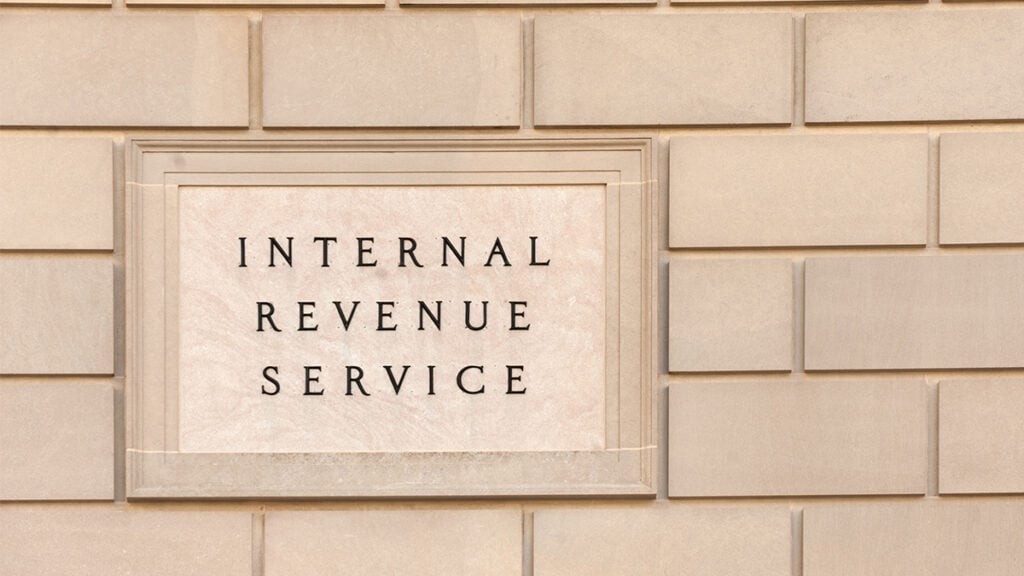Anti-tax campaigners have chosen not to focus on President Biden’s proposals that increase taxes, which would only affect profitable corporations and those who make more than $400,000 a year and are wildly popular, according to polls. Instead, they have decided Biden’s plan to step up enforcement of existing tax laws will be the easiest proposal to defeat.
The so-called Coalition to Protect American Workers, which is led by a former Trump administration official, has launched an ad claiming that Biden’s tax enforcement plan will create “an army of IRS agents, agents aggressively coming for every dime they can grab, and your house, and our small businesses.” In an ominous tone, the ad states that “Democrats want to defund the police, and Biden wants to add thousands of IRS agents,” cynically attempting to rattle voters while maintaining protections for wealthy people who can break tax laws because Republican lawmakers have defunded the IRS.
If this is the best that opponents of higher taxes can come up with, the outlook for them is grim.
Late last week, the Treasury Department released a report explaining what the administration’s tax enforcement plan would do—and how it fits into the president’s overall plan to collect more revenue from profitable corporations and individuals making more than $400,000 a year.
The plan would increase the IRS’s budget, expand income reporting by financial institutions, upgrade the IRS’s technology and regulate tax preparers. The goal is to reduce the “tax gap,” the difference between federal taxes owed and federal taxes paid. The Treasury Department estimates that the tax gap was around $600 billion in 2019, but IRS Commissioner Charles Rettig recently testified that the tax gap could be as much as $1 trillion annually.
The administration’s plan is the most serious effort in decades to shore up the IRS and would reverse years of lawmakers underfunding one of the basic functions of government. But it is also modest. The Treasury Department estimates that it would recoup $700 billion in the first decade, reducing the tax gap by just around 10 percent.
The first piece of the plan would increase the IRS budget by around $80 billion over a decade, undoing the short-sighted cuts from Republican Congresses over the past decade. As the Treasury report explains:
“In real terms, the IRS’s overall budget declined by 18.5% between FY 2010 and FY 2021. The IRS’s enforcement budget decreased by 15% over this time period, leading to a 20% decline in the IRS workforce… Today, the IRS has fewer auditors than at any time since World War II.”
The benefits of these cuts have gone disproportionately to well-off individuals because their tax returns, which are difficult and time-consuming to examine, receive less scrutiny when the IRS must cut back. ProPublica reported that in 2017, EITC recipients were more likely to be audited than households earning $200,000 to $500,000 per year.
As the report explains, audit rates rise with income level, but in recent years they have fallen most dramatically for the rich. For example, from 2010 through 2018 audit rates for EITC recipients fell from about 2.4 percent to 1.4 percent, a drop of about 41 percent. For those with income between $1 million and $5 million, they fell from 6.7 percent to 2.2 percent, a drop of about 67 percent.
Audits of corporations with $20 billion or more in assets dropped from 98 percent to around 50 percent. The IRS is also unable to audit other types of businesses, like partnerships. The report says that “more than 4.2 million partnership returns were filed in calendar year 2018… however, the IRS audited only 140 of these returns.” A footnote helpfully points out that this means partnerships are audited at a rate of just 0.00004 percent.
The report explains that “Audit rates will not rise relative to recent years for those with less than $400,000 in actual income.” Actual income, in this context, means the total income of a taxpayer, including both what they properly report and income they attempt to hide from the tax authorities.
So, for example, if an extremely wealthy real estate investor does business through several partnerships (which, we now know, are almost never audited under the current approach) is known to own billions in assets and live likes a king and yet reports no taxable income, this person seems like an ideal candidate for increased attention from the IRS.
Granted, it could be difficult for IRS personnel to know before doing an audit whether someone’s actual income is more than $400,000. After all, an audit may be needed to determine that. But it seems quite clear that the increased scrutiny will not be directed toward EITC recipients or any remotely normal, non-wealthy person.
This is why the ad launched by anti-tax campaigners is so preposterous. It is designed to convince everyone that they will be harassed and threatened by an army of IRS agents. In reality, the plan would step up enforcement of existing laws—and only for profitable corporations and the rich. The focus on the rich is a reasonable approach, given that the richest 1 percent are estimated to be responsible for around a third of the tax gap.
The plan would also increase reporting by financial institutions so that they would automatically turn over to the IRS information about income going in and out of accounts, just as they already provide the IRS with information about interest paid to account holders. It would also make badly needed investments in the agency’s technology, which now is based largely on a coding language from the 1960s and which is costly to operate because few people learn it or use it. Finally, the plan would regulate those tax return preparers who currently are not regulated, who have become a source of error-riddled returns and even fraud.
These are all commonsense reforms, and it is difficult to imagine that anyone not already opposed to the president’s agenda would be convinced by the latest anti-tax campaign that this will affect anyone other than wealthy tax evaders.





